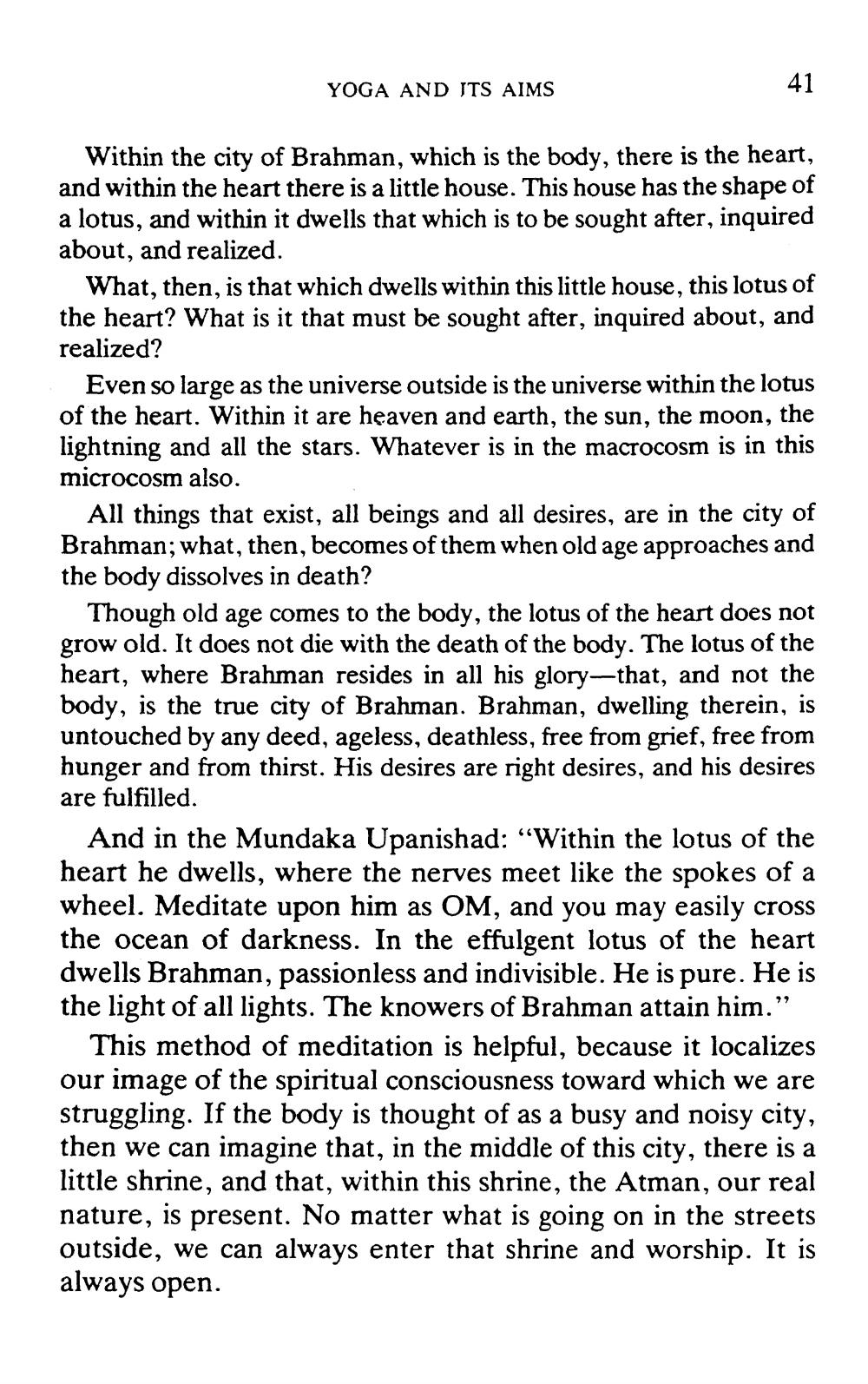________________
YOGA AND ITS AIMS
Within the city of Brahman, which is the body, there is the heart, and within the heart there is a little house. This house has the shape of a lotus, and within it dwells that which is to be sought after, inquired about, and realized.
What, then, is that which dwells within this little house, this lotus of the heart? What is it that must be sought after, inquired about, and realized?
Even so large as the universe outside is the universe within the lotus of the heart. Within it are heaven and earth, the sun, the moon, the lightning and all the stars. Whatever is in the macrocosm is in this microcosm also.
All things that exist, all beings and all desires, are in the city of Brahman; what, then, becomes of them when old age approaches and the body dissolves in death?
Though old age comes to the body, the lotus of the heart does not grow old. It does not die with the death of the body. The lotus of the heart, where Brahman resides in all his glory—that, and not the body, is the true city of Brahman. Brahman, dwelling therein, is untouched by any deed, ageless, deathless, free from grief, free from hunger and from thirst. His desires are right desires, and his desires are fulfilled.
And in the Mundaka Upanishad: "Within the lotus of the heart he dwells, where the nerves meet like the spokes of a wheel. Meditate upon him as OM, and you may easily cross the ocean of darkness. In the effulgent lotus of the heart dwells Brahman, passionless and indivisible. He is pure. He is the light of all lights. The knowers of Brahman attain him."
This method of meditation is helpful, because it localizes our image of the spiritual consciousness toward which we are struggling. If the body is thought of as a busy and noisy city, then we can imagine that, in the middle of this city, there is a little shrine, and that, within this shrine, the Atman, our real nature, is present. No matter what is going on in the streets outside, we can always enter that shrine and worship. It is always open.




